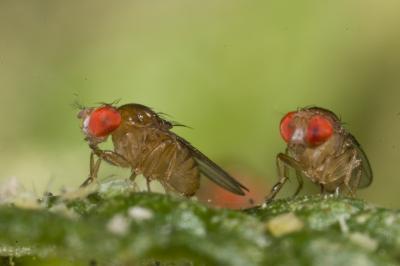The body temperature of cold-blooded (ectothermic) animals, including insects, is ultimately determined by ambient temperature, and that impacts the speed and efficiency of their vital biological processes also.
But is it changes in average temperature or frequency of extreme temperature conditions that have the greatest impact on species distribution? A group of Danish and Australian researchers decided to examine a number of insect species to find out.
The results of the study by Johannes Overgaard, Department of Bioscience, Aarhus University, Denmark, Michael R. Kearney and Ary A. Hoffmann, Melbourne University, Australia, demonstrate that it is extreme temperature events that define the distribution of both tropical and temperate species.
Climate change could affect ectotermic animals primarily because more periods of extreme weather are expected in the future.
Fruit flies were modeled
The researchers examined 10 fruit fly species of the genus Drosophila adapted to tropical and temperate regions of Australia. First they examined the temperatures for which the species can sustain growth and reproduction, and then they found the boundaries of tolerance for hot and cold temperatures.
"This is the first time ever where we have been able to compare the effects of extremes and changes in average conditions in a rigorous manner across a group of species", mentions Ary Hoffmann.
Based on this knowledge and knowledge of the present distribution of the 10 species they then examined if distribution was correlated to the temperatures required for growth and reproduction or rather limited by their tolerance to extreme temperature conditions.
"The answer was unambiguous: it is the species' tolerance to very cold or hot days that define their present distribution," says Johannes Overgaard.

Fruit flies show how climate change may affect insect distribution in the future. Credit: Ary A. Hoffmann
It may not be average temperature that is the problem, but rather extreme weather events, such as heat waves or extremely cold conditions.
Drastic changes in store
With this information in hand, the researchers could then model how distributions are expected to change if climate change continues for the next 100 years.
Most terrestrial animals experience temperature variation on both daily and seasonal time scale, and they are adapted to these conditions. Thus, for a species to maintain its existence under varying temperature conditions there are two simple conditions that must be met. Firstly, the temperature should occasionally be such that the species can grow and reproduce, and secondly, the temperature must never be so extreme that the population's survival is threatened.
In temperate climate for example, there are many species which are adapted to endure low temperatures in the winter, and then grow and reproduce in the summer. In warmer climates, the challenge may be just the opposite. Here, the species might endure high temperatures during the dry hot summer, while growth and reproduction mainly occurs during the mild and wet winter period.
The result was discouraging for all 10 species.
"Climate change will result in fewer cold days and nights, and thus allow species to move toward higher latitudes. However climate change also leads to a higher incidence to extremely hot days and our model therefore predicts that the distribution of these species will be reduced to less than half their present distribution"says Johannes Overgaard.
"In fact, our predictions are that some species would disappear entirely in the next few decades, even when they have a fairly wide distribution that currently covers hundreds of kilometers", adds Ary Hoffmann.
"Although none of the 10 species studied are normally perceived as either harmful or beneficial organisms for human society, the results indicate that distribution of many insect species will be changed dramatically, and it will probably also apply to many of the species that have particular social or commercial importance ", ends Johannes Overgaard.
Source: Aarhus University




Comments